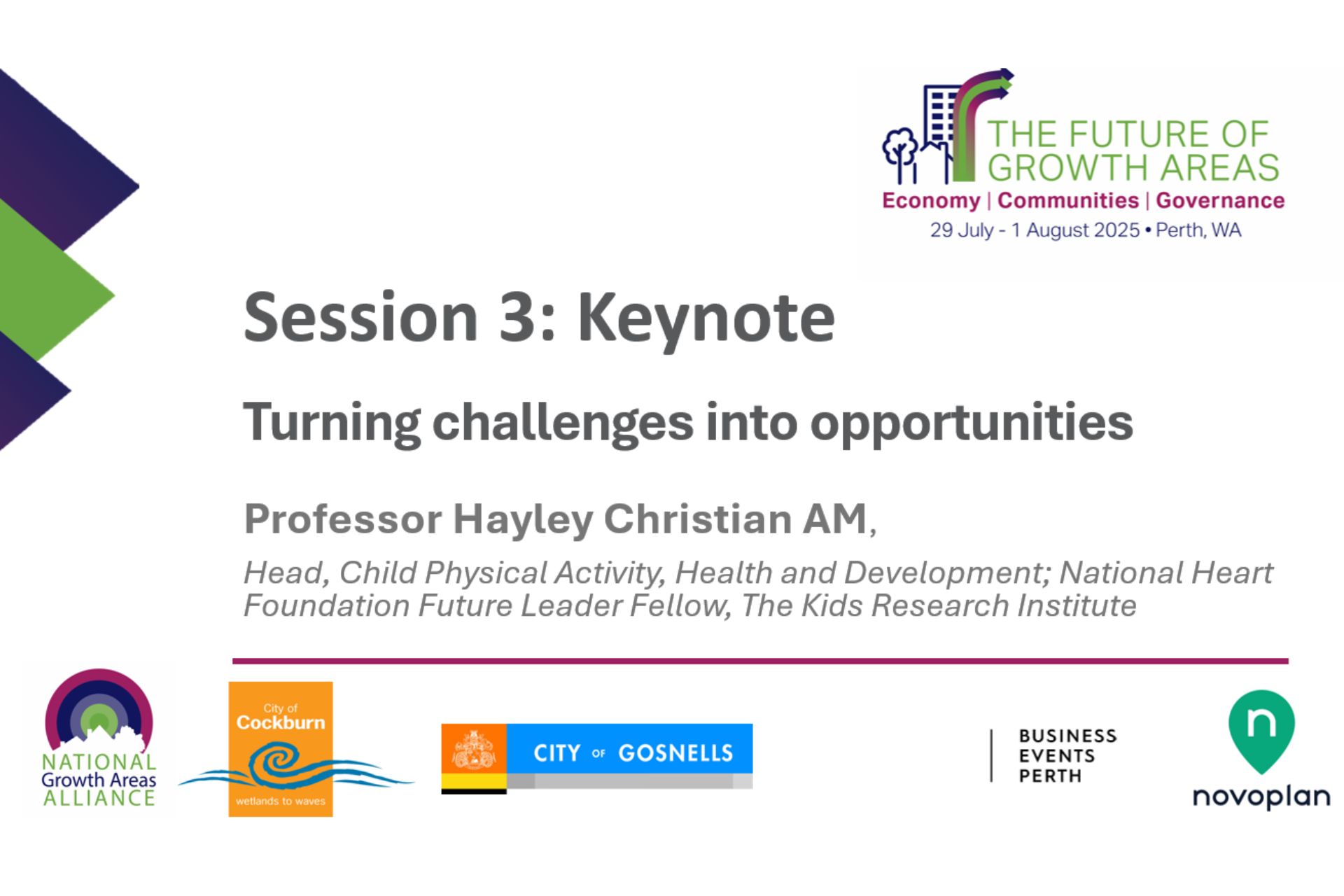
With one in four Australian children growing up in outer suburban growth areas, this session explored how the built environment shapes childhood health, development, and belonging. Drawing on new research from the NGAA’s partnership with the ARC Lifecourse Centre, speakers called for a shift in how policymakers and planners approach childhood, especially in disadvantaged or isolated communities.
Hayley presented data showing many preschool-aged children lack energetic play and that one in four are developmentally vulnerable at school entry — challenges heightened for First Nations, CALD, and low-SES families. Her research linked environmental factors like yard size, road proximity, green space access, and street connectivity to developmental outcomes, noting that parental perceptions of safety can outweigh objective measures.
Grace highlighted five themes from communities showing long-term improvement: early intervention, stable funding, cross-sector collaboration, parenting support, and cultural inclusion. Kirilee shared insights from children aged 5–10 in growth areas, emphasising “secret safe places,” emotional connections to place, and local infrastructure’s impact on wellbeing.
Practitioners reinforced the need to activate spaces, involve children in design, and address unhealthy food environments. The clear takeaway: children’s voices must be meaningfully included in planning, policy, and infrastructure decisions — because when we design well for children, we design well for the whole community.